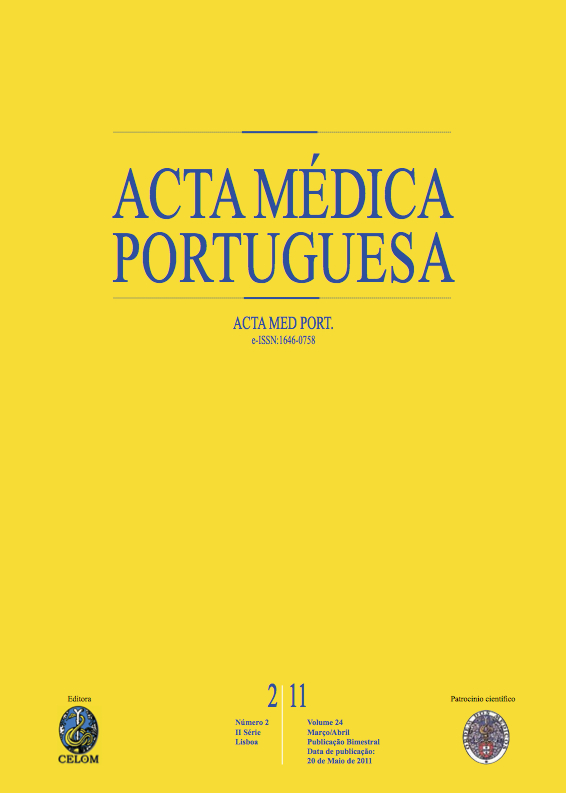Baixo valor calórico e elevado teor de sal nas refeições servidas em cantinas escolares.
DOI:
https://doi.org/10.20344/amp.1629Resumo
School lunch can contribute to aggravate food quality, by excess or deficiency, or it can contribute to compensate and alleviate them. This school meal should be an answer to combating the epidemic of obesity, and to feed some grace children. The objective was to study the nutritional composition of catering in canteens of public schools, from Northern municipalities in the District of Porto: Vila do Conde, Póvoa de Varzim, Santo Tirso and Trofa. Meals were subjected to laboratory analysis. Thirty two meals, four per each school were analysed, reference values for the analysis of the nutritional composition of meals were dietary reference intakes (USA) and eating well at school (UK). The average energy meal content was 447 kcal and the median 440 kcal (22% of daily calories). The average values of nutrients, per meal, were: lipids 9, 8 g, carbohydrate 65,7 g and proteins 24,0 g. In average the contribution for the meal energy was: 20% fat, 59% carbohydrate and 21% protein. In more than 75% of meals the contribution of lipid content was below the lower bound of the reference range. The average content of sodium chloride per meal was 3.4 g, and the confidence interval 95% to average 3.0 to 3.8 g, well above the recommended maximum value of 1.5 grams. The average content fiber per meal was 10.8 g higher than the minimum considered appropriate. In conclusion, the value low caloric meals was mainly due to the low fat content, and content salt of any of the components of the meal was very high.Downloads
Downloads
Como Citar
Edição
Secção
Licença
Todos os artigos publicados na AMP são de acesso aberto e cumprem os requisitos das agências de financiamento ou instituições académicas. Relativamente à utilização por terceiros a AMP rege-se pelos termos da licença Creative Commons ‘Atribuição – Uso Não-Comercial – (CC-BY-NC)’.
É da responsabilidade do autor obter permissão para reproduzir figuras, tabelas, etc., de outras publicações. Após a aceitação de um artigo, os autores serão convidados a preencher uma “Declaração de Responsabilidade Autoral e Partilha de Direitos de Autor “(http://www.actamedicaportuguesa.com/info/AMP-NormasPublicacao.pdf) e a “Declaração de Potenciais Conflitos de Interesse” (http://www.icmje.org/conflicts-of-interest) do ICMJE. Será enviado um e-mail ao autor correspondente, confirmando a receção do manuscrito.
Após a publicação, os autores ficam autorizados a disponibilizar os seus artigos em repositórios das suas instituições de origem, desde que mencionem sempre onde foram publicados e de acordo com a licença Creative Commons









